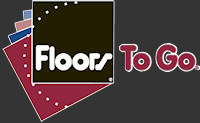by Jeff Blackburn

Adhesive: a substance (such as glue or cement) that is used to make things stick together. In the flooring world in simple terms it is known as glue. We use it to hold down wood, vinyl, carpet, vinyl tile and numerous other things. When you walk into a hardware or supply store and walk down their adhesive isle, how many of us are blown away by all there is to offer? Caulk tubes, squeeze tube, buckets, white, clear, colored, two part, single part, water proof, water cleanup, epoxy based, resin based, super, extreme, monkey, glue your head to a steel beam, etc. etc. etc. What adhesive to use where and why can cause mass confusion.
Gone are the days of school glue, super glue and wood glue and that’s all you had to chose from. Now you need to know what you are gluing, where you are gluing it and under what conditions it will be used. So it goes with flooring glue today.
Gone are the days when one glue did carpet and vinyl and another for wood. Now days there are just as many adhesives in our store as there are in hardware stores. Let me enlighten you on just a few of the basic adhesives you will need to be aware of if you plan on installing any of your own flooring. Using the wrong adhesive can result in costly mistake and replacement.
Carpet Adhesive
For most carpets a general multi-purpose adhesive works well, there are a couple varieties that will affect the tack and drying time allowing for a little more working time, otherwise they are pretty much universal.
Hardwood Adhesive
Wood adhesive has come a long way over the years and is now made with a moisture barrier built right in it. The older versions did not offer this protection and moisture was sometimes a major concern when doing wood jobs. Moisture still does play a role in floor installation, but that subject is much more in depth and will be addressed in a later blog.
Vinyl Adhesive
Vinyl adhesive is where major changes have happened over the past few years. Vinyl sheet goods flooring design itself has changed and so too has the adhesives. When the majority of the vinyl being sold was a paper or felt back variety, a basic multi-purpose did the job. Nowadays vinyl is being made of felt or paper backing as well as fiberglass, rubber and other materials. If you were to use a basic multi-purpose adhesive under these it would result in air bubbles the size of watermelons showing up under your new floor, not the most desired results for sure. This is caused by the curing procedure of multi-purpose adhesives. Nowadays every vinyl manufacturer offers their own special adhesives to use under their products. Many of these are considered pressure sensitive adhesives that activate after installed by using a heavy roller on them. You can also use these same adhesives to do a removable or permanent installation based on drying and tack time. The best procedure is to know the brand of vinyl you are installing and buy the matching adhesive and seam sealer. The key for vinyl installation is, based on however you plan on installing, as either a permanent or release, follow the instructions on the bucket in detail.
Indoor Air Quality
Another nice thing to know about flooring adhesives is that they have stopped using chemicals that can be hazardous to your health. Most all of them today use very little or no V.O.C's (Volatile Organic Compounds), so they are safe for air quality and have very low odor.
As always if you have any questions feel free to ask your Floors To Go sale professional for assistance.
